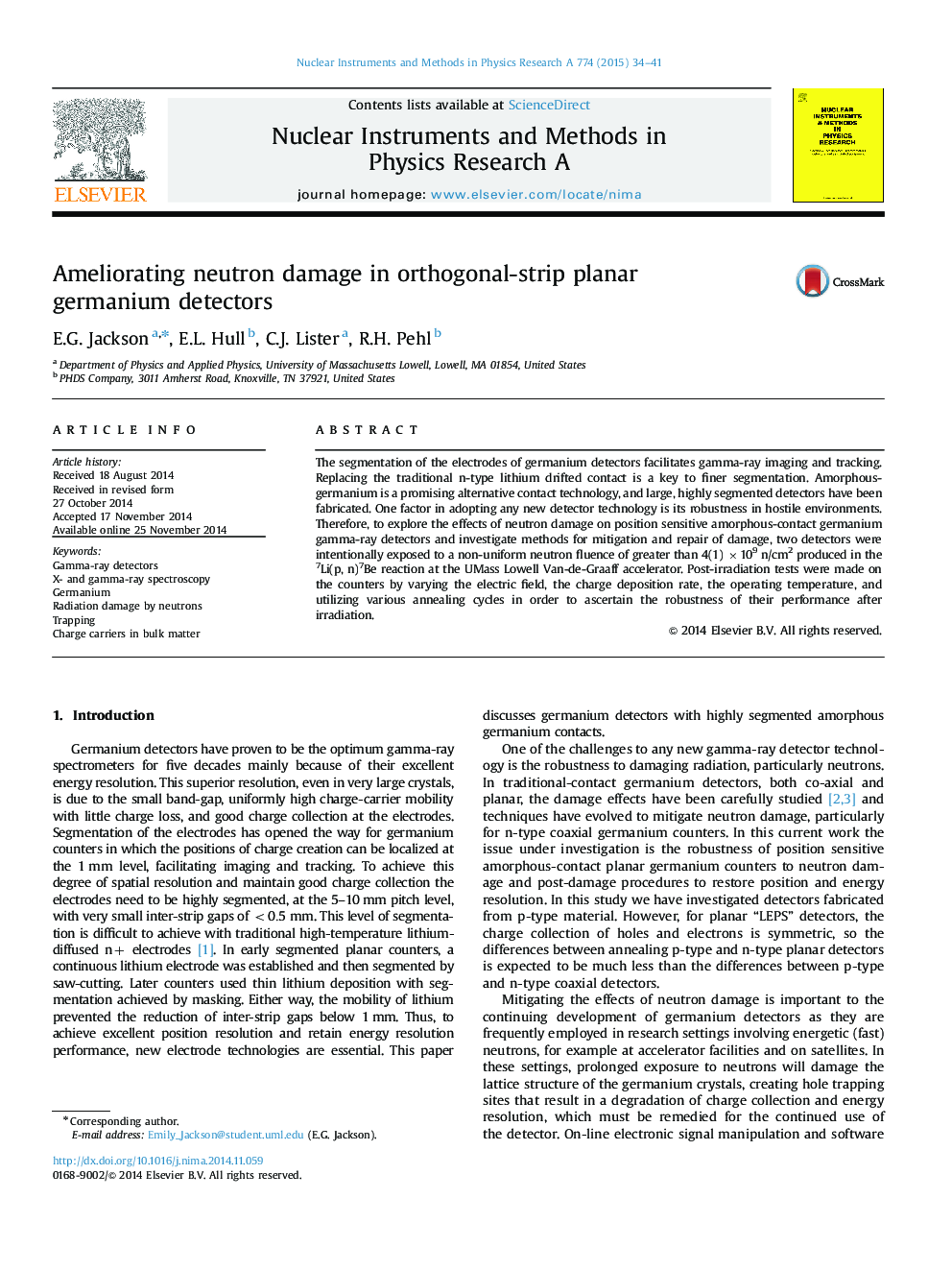| Article ID | Journal | Published Year | Pages | File Type |
|---|---|---|---|---|
| 8174300 | Nuclear Instruments and Methods in Physics Research Section A: Accelerators, Spectrometers, Detectors and Associated Equipment | 2015 | 8 Pages |
Abstract
The segmentation of the electrodes of germanium detectors facilitates gamma-ray imaging and tracking. Replacing the traditional n-type lithium drifted contact is a key to finer segmentation. Amorphous-germanium is a promising alternative contact technology, and large, highly segmented detectors have been fabricated. One factor in adopting any new detector technology is its robustness in hostile environments. Therefore, to explore the effects of neutron damage on position sensitive amorphous-contact germanium gamma-ray detectors and investigate methods for mitigation and repair of damage, two detectors were intentionally exposed to a non-uniform neutron fluence of greater than 4(1) Ã109Â n/cm2 produced in the 7Li(p, n)7Be reaction at the UMass Lowell Van-de-Graaff accelerator. Post-irradiation tests were made on the counters by varying the electric field, the charge deposition rate, the operating temperature, and utilizing various annealing cycles in order to ascertain the robustness of their performance after irradiation.
Keywords
Related Topics
Physical Sciences and Engineering
Physics and Astronomy
Instrumentation
Authors
E.G. Jackson, E.L. Hull, C.J. Lister, R.H. Pehl,
